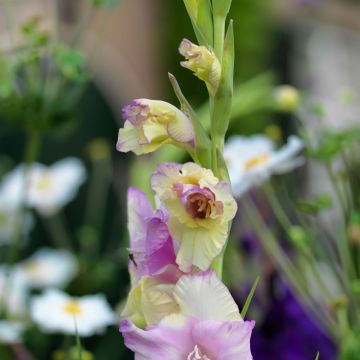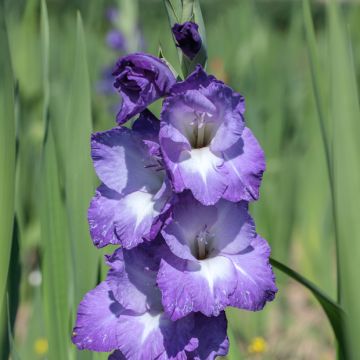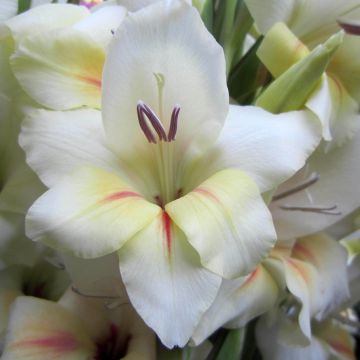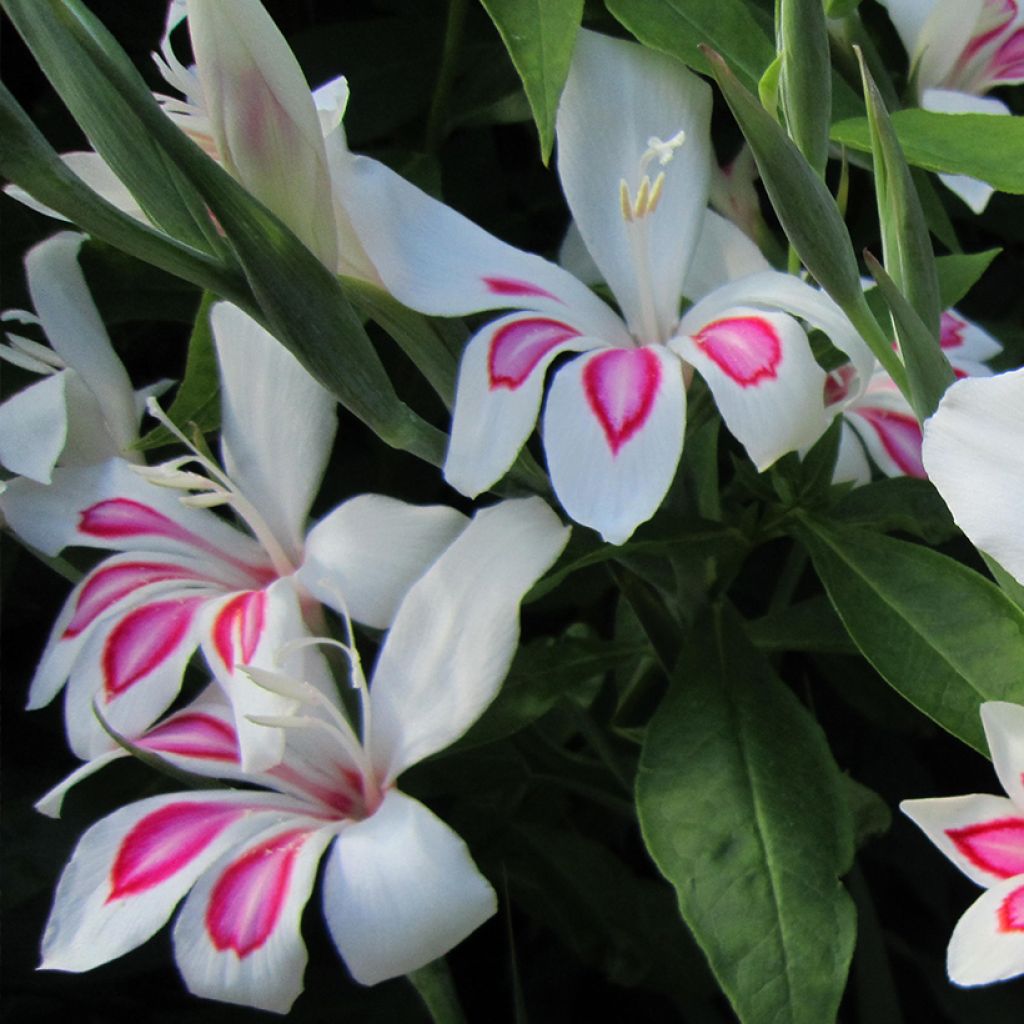

Gladiolus Prins Claus - Sword Lily
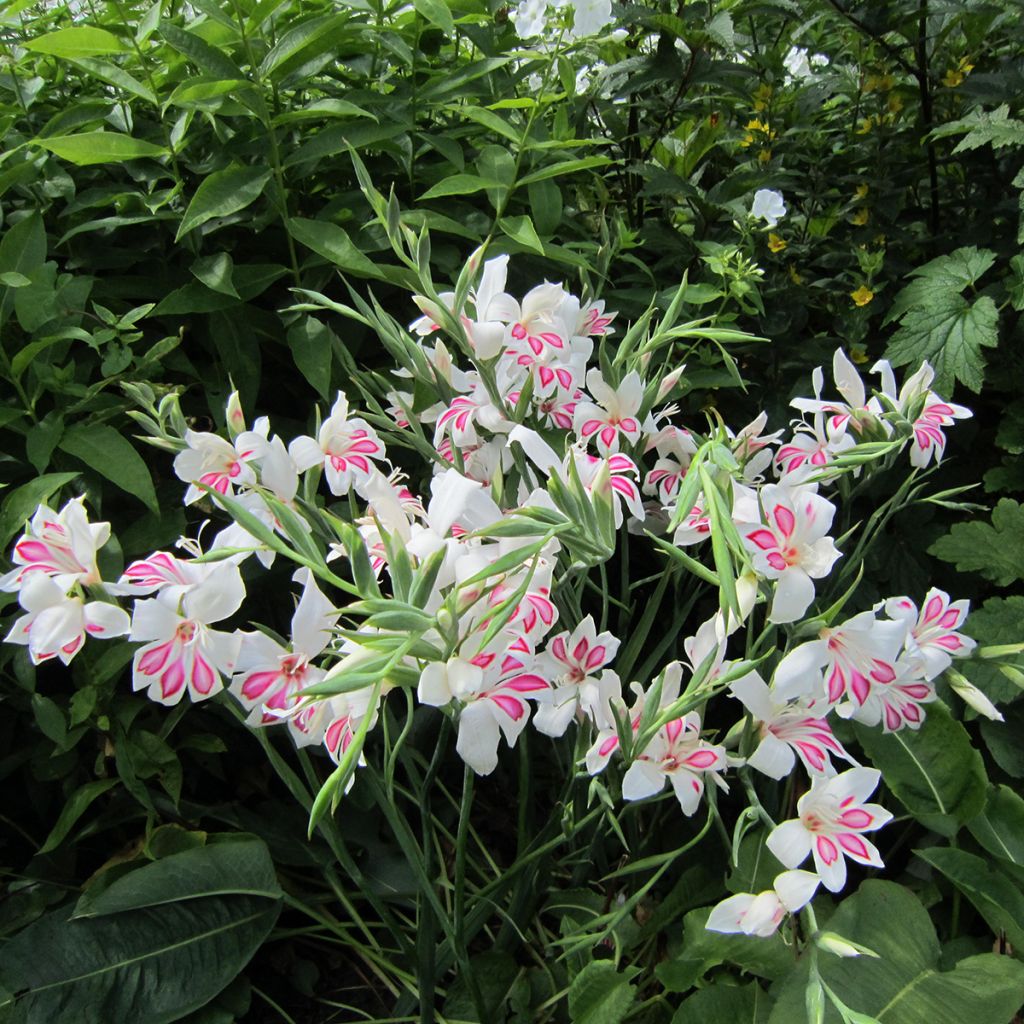

Gladiolus Prins Claus - Sword Lily
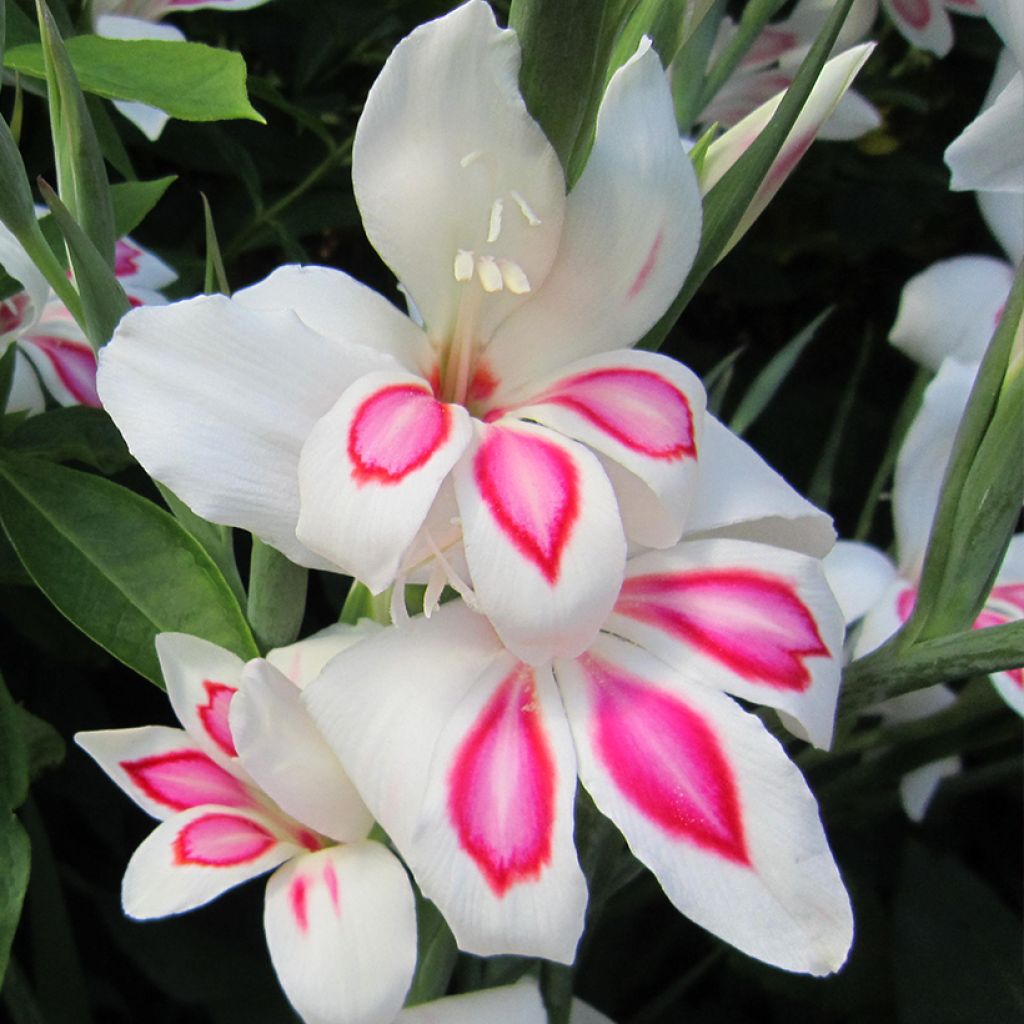

Gladiolus Prins Claus - Sword Lily
Gladiolus Prins Claus - Sword Lily
Gladiolus x colvillei Prins Claus
Colville's Gladiolus, Sword Lily
This item cannot be shipped to the selected country
Delivery charge from €5.90
More information
Schedule delivery date,
and select date in basket
This plant carries a 6 months recovery warranty
More information
We guarantee the quality of our plants for a full growing cycle, and will replace at our expense any plant that fails to recover under normal climatic and planting conditions.
From €5.90 for pickup delivery and €6.90 for home delivery
Express home delivery from €8.90.
Does this plant fit my garden?
Set up your Plantfit profile →
Description
Gladiolus 'Prins Claus' is a variety of dwarf gladiolus that charms with its rather large flowers in a refined colour, but also for its relative hardiness. Its bulbs can remain in the ground all year round in most climates, provided they are well mulched in winter. This variety produces spikes of pure white flowers adorned with delicate cherry pink tear-shaped spots in late spring. This elegant and graceful gladiolus integrates much better than the large hybrids into romantic flower beds and bouquets.
The genus Gladiolus belongs to the iris family, and cultivated varieties are hybrids classified into 3 main groups: Grandiflorus (large-flowered), Primulinus (early-flowering), and Nanus (butterflies). Gladiolus 'Prins Claus' is classified in the horticultural group Nanus.
Gladiolus 'Prins Claus' is a perennial herbaceous plant with thin, dark green sword-shaped leaves arranged in a fan shaped tuft about 40 cm (16in) tall. Flowering takes place in June-July. From the foliage, a spike-like inflorescence with several buds emerges at 70 cm (28in) above the ground. The 6-petaled flowers are about 5-6 cm (2in) in diameter and open widely, like butterflies, carried by thin but sturdy stems. The flowers open gradually from bottom to top, in groups of 4 or 5, forming elegant flower spikes. The storage organ is a corm, which is a swollen stem with scales. Each corm will produce 2 or 3 flower spikes.
Gladioli and their long colourful spikes are symbols of the 70s and somewhat formal floral arrangements. Far from this archetype, dwarf Gladiolus 'Prins Claus' fits well into simple perennial flower beds, without staking. It pairs well with ground cover roses in pink, mauve, and white tones, low grasses such as Stipa pennata or tenuifolia, forget-me-nots and penstemons, for example. Add silver foliage (Stachys byzantina, artemisias) or purple foliage (Panicum Sangria) to complete the scene. For bouquets, cut the flower spikes when the first floret starts to open. Plant them at two-week intervals from early spring until the end of June to flower the house and garden all summer long.
The gladiolus gets its name from the shape of its sword-like leaves, derived from the Latin word gladius. Its wild forms were often represented in jewellery or on carpets and fabrics made by the Semitic people before the Christian era.
Report an error about the product description
Gladiolus Prins Claus - Sword Lily in pictures


Plant habit
Flowering
Foliage
Botanical data
Gladiolus
x colvillei
Prins Claus
Iridaceae
Colville's Gladiolus, Sword Lily
Cultivar or hybrid
Other Gladioli
Planting and care
Plant the bulbs of the Prins Claus Gladiolus in well-drained soil and in a sunny location, sheltered from the wind under 8 to 10 cm (3 to 4in) of soil, spaced 10 to 15 cm (4 to 6in) apart.
Gladiolus likes rich, fertile, but well-drained, sandy soils, and it dislikes compact clay. Avoid using manure to fertilise the soil, as it promotes bulb rot. The plant should not lack water during its growth and flowering period, but its bulbs appreciate being dry during the resting period. The corms of this variety can overwinter in the ground, in well-drained, healthy soil, covered with a thick mulch to prevent damage from severe frost. In very cold regions, plants should be dug up as soon as the leaves have yellowed, to be stored dry, protected from heat and frost. You can also grow them in pots, sheltered from the cold (20 bulbs for a pot of 20 to 22 cm (8 to 9in)).
Planting period
Intended location
Care
This item has not been reviewed yet - be the first to leave a review about it.
Haven't found what you were looking for?
Hardiness is the lowest winter temperature a plant can endure without suffering serious damage or even dying. However, hardiness is affected by location (a sheltered area, such as a patio), protection (winter cover) and soil type (hardiness is improved by well-drained soil).

Photo Sharing Terms & Conditions
In order to encourage gardeners to interact and share their experiences, Promesse de fleurs offers various media enabling content to be uploaded onto its Site - in particular via the ‘Photo sharing’ module.
The User agrees to refrain from:
- Posting any content that is illegal, prejudicial, insulting, racist, inciteful to hatred, revisionist, contrary to public decency, that infringes on privacy or on the privacy rights of third parties, in particular the publicity rights of persons and goods, intellectual property rights, or the right to privacy.
- Submitting content on behalf of a third party;
- Impersonate the identity of a third party and/or publish any personal information about a third party;
In general, the User undertakes to refrain from any unethical behaviour.
All Content (in particular text, comments, files, images, photos, videos, creative works, etc.), which may be subject to property or intellectual property rights, image or other private rights, shall remain the property of the User, subject to the limited rights granted by the terms of the licence granted by Promesse de fleurs as stated below. Users are at liberty to publish or not to publish such Content on the Site, notably via the ‘Photo Sharing’ facility, and accept that this Content shall be made public and freely accessible, notably on the Internet.
Users further acknowledge, undertake to have ,and guarantee that they hold all necessary rights and permissions to publish such material on the Site, in particular with regard to the legislation in force pertaining to any privacy, property, intellectual property, image, or contractual rights, or rights of any other nature. By publishing such Content on the Site, Users acknowledge accepting full liability as publishers of the Content within the meaning of the law, and grant Promesse de fleurs, free of charge, an inclusive, worldwide licence for the said Content for the entire duration of its publication, including all reproduction, representation, up/downloading, displaying, performing, transmission, and storage rights.
Users also grant permission for their name to be linked to the Content and accept that this link may not always be made available.
By engaging in posting material, Users consent to their Content becoming automatically accessible on the Internet, in particular on other sites and/or blogs and/or web pages of the Promesse de fleurs site, including in particular social pages and the Promesse de fleurs catalogue.
Users may secure the removal of entrusted content free of charge by issuing a simple request via our contact form.
The flowering period indicated on our website applies to countries and regions located in USDA zone 8 (France, the United Kingdom, Ireland, the Netherlands, etc.)
It will vary according to where you live:
- In zones 9 to 10 (Italy, Spain, Greece, etc.), flowering will occur about 2 to 4 weeks earlier.
- In zones 6 to 7 (Germany, Poland, Slovenia, and lower mountainous regions), flowering will be delayed by 2 to 3 weeks.
- In zone 5 (Central Europe, Scandinavia), blooming will be delayed by 3 to 5 weeks.
In temperate climates, pruning of spring-flowering shrubs (forsythia, spireas, etc.) should be done just after flowering.
Pruning of summer-flowering shrubs (Indian Lilac, Perovskia, etc.) can be done in winter or spring.
In cold regions as well as with frost-sensitive plants, avoid pruning too early when severe frosts may still occur.
The planting period indicated on our website applies to countries and regions located in USDA zone 8 (France, United Kingdom, Ireland, Netherlands).
It will vary according to where you live:
- In Mediterranean zones (Marseille, Madrid, Milan, etc.), autumn and winter are the best planting periods.
- In continental zones (Strasbourg, Munich, Vienna, etc.), delay planting by 2 to 3 weeks in spring and bring it forward by 2 to 4 weeks in autumn.
- In mountainous regions (the Alps, Pyrenees, Carpathians, etc.), it is best to plant in late spring (May-June) or late summer (August-September).
The harvesting period indicated on our website applies to countries and regions in USDA zone 8 (France, England, Ireland, the Netherlands).
In colder areas (Scandinavia, Poland, Austria...) fruit and vegetable harvests are likely to be delayed by 3-4 weeks.
In warmer areas (Italy, Spain, Greece, etc.), harvesting will probably take place earlier, depending on weather conditions.
The sowing periods indicated on our website apply to countries and regions within USDA Zone 8 (France, UK, Ireland, Netherlands).
In colder areas (Scandinavia, Poland, Austria...), delay any outdoor sowing by 3-4 weeks, or sow under glass.
In warmer climes (Italy, Spain, Greece, etc.), bring outdoor sowing forward by a few weeks.

































